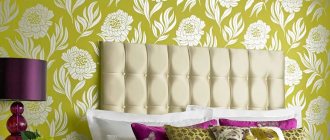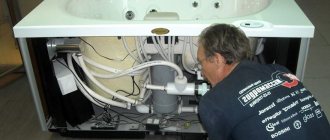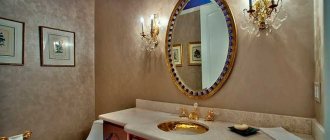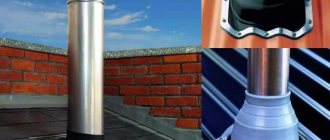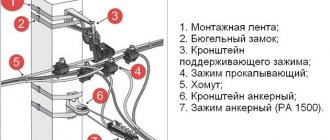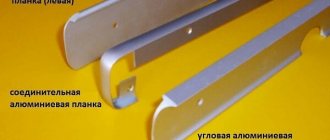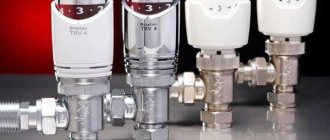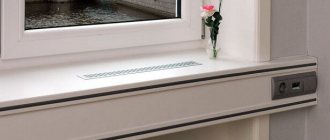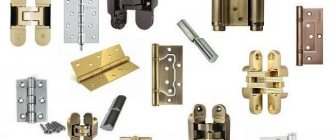Until relatively recently, having decided to update the interior of their home, the owners simply pasted old wallpaper onto new ones. The range offered by manufacturers was relatively small. I had to give preference to paper canvases. The sufficiently dense material did not allow bubbles, spots and bumps to form on the wall surface. The number of layers formed in this case could differ significantly. In one room there could be 2–3, in others there could be more than 8.
Modern finishing materials do not provide this opportunity. Before pasting the walls, you will have to completely remove the old coating. This can be done in various ways. We invite you to get acquainted with the main ones.
Is it necessary to remove old wallpaper?
In Soviet times, there was a tradition of gluing new wallpaper on top of the old layer. And this did not create serious problems: the industry produced such products from the same type of paper raw materials.
In the modern era, a diverse selection of materials has emerged. The requirements for preparatory work have changed accordingly.
- If you bought paper wallpaper, you can take a chance and leave the previous coating.
- However, even in this case, there is no guarantee that bubbles and swellings will not appear on the new surface, or that it will not begin to peel off over time.
- Therefore, the best solution is to completely clean the walls.
Recommendations
Before starting work, you should consider the following parameters:
- Composition of old wallpaper;
- What are the walls made of?
- The type of glue that was used.
Then you need to prepare the tools and materials. Depending on the complexity of the process, you may need:
- Container, soap solution (cleaning agent);
- Well-sharpened spatulas, of different widths;
- Steam (iron);
- Roller (or wallpaper tiger);
- Wallpaper remover;
- Sprayer.
Additionally, you will need a stepladder, gloves, garbage bags and rags.
Important! After treating with water or various solutions, the walls should be washed with a clean liquid and wiped dry.
Features of removal depending on the base and material
Different coatings have their own characteristics. This must be taken into account when choosing a removal method.
- Vinyl. They leave easily. It is enough to soak them in water and remove them after 20-30 minutes.
- Paper. They come off easily if they are glued with high-quality glue (universal “Methylane”). Remove with a knife or spatula. If they don’t come off, soak them in water or steam them with an iron.
- Non-woven. They have two layers, the top layer is removed. Ideally, it is better to steam old canvases or use a wallpaper remover.
- Liquid. They are afraid of moisture. To “unstick” them, just soak the wall; after a while, the coating will begin to peel away from the walls.
- Washable. Treated with a protective composition that does not allow moisture to pass through. You need to roll the walls with a needle roller, apply wallpaper remover, and remove after a while.
- Glass wallpaper. Easy to remove. You need to tear the sheets and fill the space under them with water. After 45 minutes they will start to lag behind. Or immediately fill it with a special liquid and easily tear it off.
- Self-adhesive. Old sheets come off easily; to speed up the process, you can moisten them with boiling water or use a hair dryer.
Preparation
When cleaning walls, dust is released and debris accumulates. Preliminary actions:
- Remove furniture from the room where work is being carried out;
- Move the remaining things to the middle of the room and cover them (with film, newspapers);
- Turn off the power, seal sockets and switches with tape (this is especially important during wet processing);
- Cover the floor and baseboards with films (secure with adhesive tape), lay paper on top - this prevents slipping;
- Cover doors and handles with film;
- When entering the room, lay down a wet cloth (to trap dust).
Useful tips
- After removing the old material and cleaning the walls, it is recommended to apply a primer. This will eliminate the appearance of fungus and moldy stains and allow finishing materials to better adhere (why do stains appear on wallpaper and how to get rid of them?).
- It is worth catching the balance - there should be neither more nor less water.
AttentionIf you don’t wet the walls enough, the water will quickly absorb and dry, without having time to soak the paper and glue. If there is too much water, all the liquid will drain onto the floor and the wallpaper will not have time to soak properly.
- Instead of soap, you can use dish soap or shampoo. Any such solution will help you easily cope with annoying wallpaper.
There is nothing difficult in removing old wallpaper; all you need is the necessary equipment and patience. After all, as you know, work ennobles a person. And it’s doubly pleasant to realize that the room in which family members will spend time was made from A to Z with your own hands.
Easy dismantling
You can quickly remove wallpaper from walls if it peels off without effort. They are removed by hand: grab the top edge of the covering and pull down. This is possible when the repair was carried out a long time ago (5 years or more).
Important! You need to act carefully: the old coating has low strength. The fragments remaining on the walls are removed with a spatula (knife).
Method one: manual
First, assess the situation: sometimes the paper covering is held on the walls by one word of honor, and you can simply tear off the wallpaper with your hands, and quite quickly.
To do this, simply grab the corner of the old piece from below with your hand and remove the entire wallpaper. We remove the remaining pieces on the walls with a spatula or scraper. There is one danger with this technology: the old canvas can come off along with the plaster, so cover your head with a cap or scarf and protect your nose and mouth from construction dust with a mask.
Removal with water
This is a long-known and popular method. Recommended for paper backing.
- Before starting work, make sure that electrical devices and baseboards are protected from water.
- The container is filled with warm liquid. Dissolve a piece of laundry soap in it. You can add cleaning powder or detergent composition.
- Then the wallpaper is processed. The process uses a roller, sponge or spray.
On a note! The liquid is used in such volumes that it does not drain onto the floor. The treatment is carried out in sections - this way the surface does not have time to dry.
The method is suitable for vinyl and waterproof materials. But you will need fabric softener (0.3 liters per container).
- If a water-repellent or two-layer material is removed, it is additionally pierced (with a wallpaper tiger, a knife). Otherwise, the inner layer will not get wet.
- After applying the solution, wait half an hour and begin dismantling.
- Use a sharp tool to lift the seams and separate the covering from the walls. Refractory areas are re-moisturized.
- For particularly difficult areas, a scraper is used.
- But you need to act carefully - otherwise damage will remain on the plaster.
How to quickly remove wallpaper from a wall using a spatula and a knife
It is worth noting that this is a classic method for removing old panels. It is used by most amateur builders. The step-by-step action plan is as follows:
- using a sharp utility knife, tear a piece of wallpaper at the top of the wall;
- by the peeled edge you need to slowly pull the canvas down, preventing it from tearing;
- As the wallpaper is detached from the wall surface, it is important to use a spatula, with which you need to pry the panel from below with forward movements.
It is also recommended to pre-wet the paper wallpaper so that it is saturated with moisture. This will make the task of peeling off significantly easier, after which the canvas will come off the wall without any problems. For these purposes, it is recommended to use a regular sponge or soft roller.
The main thing is not to rush in the process of this work. You cannot sharply pull the canvas down, as it may simply tear or delaminate, which will complicate the subsequent task of removal.
Steam removal
This method is more effective than water: it wets the plaster faster and does not destroy it, and is safe for electrical appliances. A steam generator is used here; its alternative is an iron.
- You will need cotton fabric. It is moisturized abundantly.
- The device is set to maximum mode and the textiles are pressed against the wall.
- Iron a certain area of the wallpaper several times.
- Use a sharp tool to pry up the canvas and then remove it.
On a note! It is more convenient to carry out this work together: one participant moves the fabric, the other operates the iron.
Radical method of removal
If you need to tear off material from the walls or ceiling that is glued very tightly, for example, preserved from Soviet times, you may encounter serious difficulties. Previously, during repairs, carpenter's glue, bustilate, and PVA were used, which are capable of gluing wallpaper to the wall for centuries and are completely resistant to ordinary soaking.
A drill with a brush attachment will help, with which the coating can simply be mechanically removed from the wall. This method has a drawback: a stiff brush will remove not only wallpaper from the walls, but also a layer of putty, and possibly pieces of plaster.
Dismantling after PVA glue
Removing old wallpaper with this adhesive base is more difficult. But there are time-tested methods.
- Finely grated laundry soap is diluted in a bucket of water (4 liters).
- Or vinegar (9%) is diluted in this volume of liquid, 0.45 l.
- If these compounds are mixed, then such a solution will cope with the most difficult areas.
Another option is a grinding machine with a special attachment (can be replaced with a drill). The wallpaper pieces processed by the machine are then removed with a spatula.
Important! The last method is used in extreme cases. During processing, the wall may be damaged; the surfaces will have to be leveled.
Life hacks and folk remedies
To make the process of removing wallpaper even faster and even more effective, read what additional magical tools you have at hand. It's time for them to bring real benefit to humanity.
- Laundry soap. Add soap shavings to warm water before applying to the wall. This solution will speed up and make the process a little easier. It is enough to add a quarter of the grated piece to a bucket of water.
- Fabric softener. If you don't mind. Use like soap - add to water. The effect is similar - it will be easier to remove wallpaper. One cap is enough.
- Table vinegar. Unlike the previous life hack, it will not smell like violets, but the vinegar will have its effect. You will need 5 tablespoons per bucket.
- Wallpaper glue. Yes, adding wallpaper glue to water will help our cause - the solution will become more viscous and will stick to the canvases better (longer) and be absorbed into them. Remember when we glue wallpaper - how it softens when it sits with the glue applied, waiting for its moment. Use 5-6 times less glue than according to the instructions.
- Special solution. If you take care in advance, you can buy a special powder or solution at a hardware or hardware store that will cope with the task much better than the eternally exalted remnant of household soap. The following companies produce these magical solutions and powders, feel free to take them if you see them on the shelves:
Follow the instructions on the packages.
- Iron and wet cloth. Wet your wife's/husband's old T-shirt, apply it to a stubborn piece of wallpaper on the wall and use a hot iron. High temperature and humidity will cause the old wallpaper glue to give in and give you this unfortunate piece of paper. If you have a steam generator at home, use it.
Special formulations
These products speed up the process, are affordable, harmless, and are perfectly absorbed into the material.
Instructions on how to remove wallpaper are located on the label: the required proportions are stated here.
They operate in the following sequence:
- The drug is mixed with water and brought to a homogeneous mass;
- Apply the prepared mixture evenly to the wallpaper (with a roller or sponge);
- Wait according to the specified time until the composition is absorbed;
- The softened sheets are removed with a spatula.
By the way! Waterproof layers are first perforated (with wallpaper tiger, etc.).
Using a steam generator
Construction-type steam-generating equipment is more often used by finishing specialists, but it is quite possible to use home equivalents to facilitate the process of removing interior cladding.
You can use a steam mop, a home clothes steamer or an iron with a steam function.
The work will be carried out gradually, in order to properly soften the canvas, you will need to move slowly, processing small sections of the wall.
If after the first steam treatment it was not possible to completely remove the material, you can spray the fabric with steam as many times as necessary.
Steam treatment
It is important to remember about the wear and tear of equipment: if you steam everything with a small iron, the equipment will most likely not withstand the load.
The sole of the device may also become damaged, but this can be avoided by placing a piece of gauze folded in half between the iron and the surface of the base.
The principle of heating from moisture evaporation will work even when wet gauze is placed under a simply hot unit.
Type of wallpaper
Depending on the wallpaper material, different means are chosen and have their own characteristics.
Liquid wallpaper
Another name for them is decorative plaster.
Dismantling the coating will not take much time and effort:
- The sprayer is filled with clean water;
- Treat the entire wall;
- Wait 15 minutes;
- The swollen coating is removed using a spatula.
Vinyl
Such canvases are made of polyvinyl chloride combined with a paper base (sometimes with non-woven fabric).
Here wetting with water is used. But there are some nuances:
- First, the liquid-impermeable fibers are cut (with a wallpaper tiger, etc.), then soaked;
- The coating is left to soak for 20 minutes;
- Only the top layer can be removed; the paper base is generously moistened and scraped off with a sharp tool.
On a note! You can use an adhesive solution. The result is a thicker and more effective consistency. It flows slowly and penetrates deeper.
Nonwoven
Canvases can only be made from this raw material. Removed in the same way as paper covering.
Nuances arise when the composition of the top layer is different:
- Textiles – dismantled with water, steam;
- Vinyl - requires pre-perforation, then wetted.
Plasterboard walls
A wall based on reinforced concrete, brick, etc. is a solid foundation that does not create problems. Another thing is drywall. This is a comfortable, but low-strength profile.
You cannot use aqueous solutions here (very carefully - a grinding machine): they will leave damage. Processing requires care so as not to affect the outer layer of cardboard.
In this situation use:
- Special compositions (if putty is applied between the drywall and the canvas);
- Wallpaper glue, when applied over the coating, moisturizes it abundantly and does not dry out for a long time.
Removing old layers from a wall is sometimes a difficult but doable task. Here it is necessary to take into account a number of features: the quality of the walls and the type of paintings, the brand of glue.
The photo on how to remove wallpaper demonstrates how you can get rid of the old coating with the least effort. It is enough to use methods proven by time and experienced craftsmen.
Complex tasks
The greatest difficulty is caused by dismantling from difficult surfaces, such as ceilings, figured arches, drywall, plywood.
The difficulty lies in the lack of strength, which can be easily damaged by metal tools, and the inability to replace individual damaged areas without replacing the entire structure.
